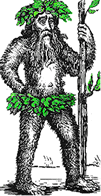 Hermit's Free Library Computer Networking
Hermit's Free Library Computer Networking
 Hermit's Free Library Computer Networking
Hermit's Free Library Computer Networking
This article describes NICs, Hubs, and Repeaters and the roles they play in connecting PCs with a local area network.
Network Interface Cards have two major functions:
The NIC is often a bottleneck as it generally processes data at a slower rate than either the network or the processor of the machine in which it is installed.
NIC's come in 8-bit, 16-bit, and 32-bit flavors. Recall that a 16- bit device can move data at twice the rate of an 8-bit device.
More expensive 32-bit NICs are usually reserved for servers.
Because of both their firmware and connection type, NIC's are designed to work with a specific network architecture: i.e. Ethernet NIC's and Token Ring NIC's.
NIC's include a component called the transceiver, which is responsible for converting data to a signal which is in a form appropriate to the network. For example, a FDDI card contains a laser diode that converts data signals to light pulses.
An Ethernet card may contain more than one transceiver, each with a different type of port which accommodates a different cabling media. This type of Ethernet card is called a combo card and would typically support 10BaseT (UTC) and 10Base2 (Thinnet).
Different networks use different methods to identify each node on the network. Ethernet and Token Ring cards have addresses hard-coded on them by the manufacturer. These addresses are 6-byte (48 bit) hex addresses, part of which refers to the manufacturer and part of which refers to the code - making them unique. These addresses are called:
Unlike IP addresses which are logical and operate at Layer #3, the Network layer, of the OSI model, adapter addresses are physical addresses and are used at Layer #2, the Data Link layer.
Methods to find out the MAC addresses: ? Start > Run > WINIPCFG (also shows IP address) ? net config workstation ? net config server ? Windows NT diagnostics > Network > Transports
NIC's require
If the card is PCI, the PCI bus controller manages the IRQ and I/O address requirements.
If the card is ISA or EISA it may be Plug-and-Play and the IRQ and I/O addresses may be configured with jumpers, DIP switches, or using a software configuration program.
Hubs are the devices used as central connecting points on star topology networks.
Hubs most commonly are used with 10Base-T cables. The U/STP cable terminates in RJ-45 connectors which plug into the hub's RJ-45 jacks, also referred to as RJ-45 ports.
Hubs can have as few as 6 ports or as many as several dozen. They may also support other media and connector styles than UTP, coax or fiber optic, for example.
Hubs are basically signal splitters - they take all the signals received through one port and redistribute them among the other ports. (Hubs with 10Base-F connectors use mirrors to split the light beam among the various ports).
Since they are signal splitters they can be daisy-chained to provide more available ports.
Hubs are powered devices. They may include LED's which can monitor power, active connections, traffic, and collisions.
Passive hubs are the simplest. They take all the packets received on any port and send them out all the other ports and that's about it. They most often include one 10Base-2 connector in addition to their RJ-45 ports. The 10Base2 connector is usually used as a backbone connection - i.e. between two hubs at some distance and/or between the hub and the server.
Hubs which compensate for attenuation by amplifying or repeating the data signal are called active hubs. They also sometimes use a technology called store and forward in which the hub looks at each packet before forwarding it and if it finds certain kinds of errors, repairs the packet. Active hubs may also include additional diagnostic capabilities.
Intelligent hubs have all the features of active hubs and in addition can monitor the network and report problems to a central location from where they can be remotely controlled using network software.
Signal attenuation is proportional to the distance the signal travels. Ethernet thinnet needs a repeater about every 600 feet (180 meters).
Repeaters are devices that strengthen the data signal on a network. There are two types and they take different approaches to boosting signal strength: